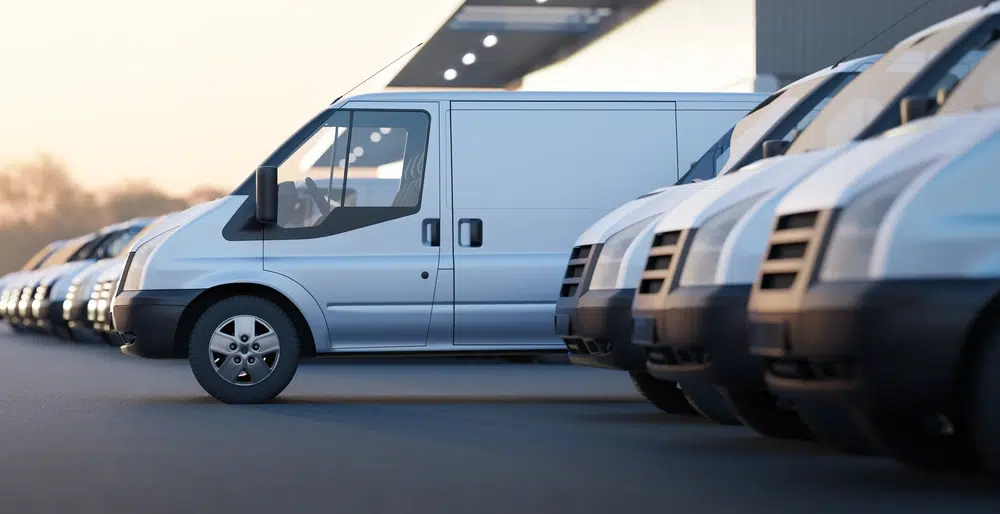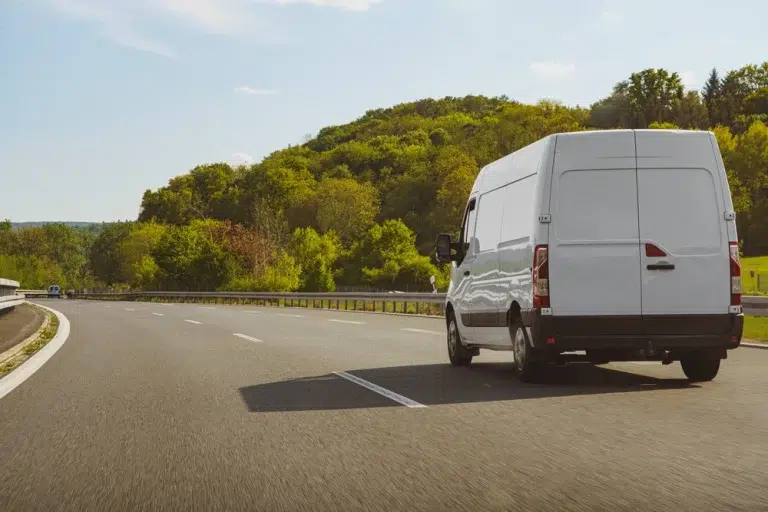Buying a van is often the start of an exciting new journey. You may be taking your career to the next step, planning to take your family on long haul trips across the continent, or even packing it all up and hitting the road for good.
Whatever your reasons are for buying a van, before you make any new purchase, it is important that you understand the ins and outs of van insurance groups. After all, the van insurance group is a key factor in determining the overall cost of your premium and knowing what premiums to expect should help you to make sure that you budget wisely.
But what exactly are van insurance groups?
Here, we are going to look at a van insurance groups list, explain what each group is, how they are decided and what you can do to bring the cost of your van insurance premiums down.
- Do vans have insurance groups?
- What is a van insurance group?
- How do I find out a van’s insurance group?
- Is insurance cheaper on a van?
- What affects the cost of van insurance?
- What can you do to lower the cost of van insurance?
- Summary
Do vans have insurance groups?
Just as regular cars are placed into car insurance groups, every van that is insured is placed into one of fifty different van insurance groups. The group that the van is placed into has a significant impact on how much it costs to insure.
What is a van insurance group?

Prior to 2016, there were only 20 van insurance groups, numbered 1 to 20, with 1 being the least expensive to insure and 20 the most expensive. Vans produced after 2016 have been placed in groups 21 to 50, with 21 being the least expensive and 50 the most expensive. There are many other factors that affect the cost of your van insurance, such as your age, location and driving history, but all else being equal, your premiums will be higher if your van is in a higher van insurance group.
So, let’s jump in and look at how these groups are determined.
What factors influence van insurance groups?
Every van is assigned an insurance group by the Association of British Insurers (ABI).
The main factors that decide which group a van is placed in are:
- The price of the van when bought new.
- The cost of repairs and parts. For example, if the van has a niche component, it will likely cost more to repair or replace, so the van will be put into a higher insurance group.
- The overall power and speed of the van. Vans with more powerful engines and higher top speeds are more likely to be involved in accidents. Therefore, faster and more powerful vans are placed into higher insurance groups.
- The size and weight of the van. Bigger and heavier vans are also more likely to be involved in accidents as they can be harder to control, so they too are placed into higher insurance groups.
- The van’s security. Vans that are better secured are less likely to be stolen. So, vans with the latest security features will be placed into a lower insurance group.
How do I find out a van’s insurance group?
To find out what van insurance group your van is in, you can simply enter its registration number into a van insurance group checker. Alternatively, you can find its insurance group by putting in the make and model of the vehicle.
As a general guide, we have compiled a van insurance group list which shows the type of van you can expect to find in each group. Beware though, vans can sometimes change groups, so this list shouldn’t be taken as definitive!
Groups 1-10
All the vans in this group were produced before 2016. For example:
- Citroen Berlingo (up to the second generation)
- Citroen Nemo
- Renault Kangoo (up to the second generation)
Groups 11-20
All the vans in this group were also produced before 2016. For example:
- Renault Trafic
- Peugeot Boxer
Groups 21-30
All the vans referenced beyond this point were manufactured after 2016. For example:
- Citroen Berlingo
- Fiat Doblo
- Ford Fiesta Van
Groups 31-40
For example:
- Ford Transit (certain models)
- Peugeot Expert
Groups 41-50
For example:
- Nissan Navara
- Vauxhall Movano
Security ratings
You will also often see a letter after the van insurance group number. The letter denotes the security grading of the vehicle which, as we saw earlier, also influences the insurance group of the van.
The security letter ratings are E, A, D, U, P and G.
- E. This means that the van “Exceeds” the security requirements for a van of this type. Thus, a van with an E rating will be in a low insurance group.
- A. This means that the van’s security is “Acceptable”. The van meets the accepted security requirements for a van of its type.
- D. This means that the van “Does not meet security requirements” for a van of this type and the insurance group rating has therefore been increased.
- U. This means that the van’s security is “Unacceptable” and significantly below the requirements of a van of its type. Some insurers may ask for the van’s security to be updated before they are willing to offer cover for it.
- P. This stands for “Provisional” and means that the group rating was incomplete at this model of van’s launch date.
- G. This means that the vehicle is foreign and does not have a security rating as it wasn’t produced in GB.
What insurance group is a transit van?
A transit van’s insurance group can depend on the numerous factors which we’ve already mentioned.
To give a rough idea, however, of the van insurance group a transit van could feature in, we know that a Ford Transit van can sit in groups between 1 and 20 if it was registered before 2016, and in groups between 25 and 50 if it was registered after 2016.
Is insurance cheaper on a van?

We often get asked whether insurance is high on a van when compared to insuring cars, and the answer is; it generally is. It is always dependent on the van you’re insuring, but more often than not van insurance premiums tend to be higher, if not considerably higher than those needed for cars.
The fact that vans are larger and typically have more powerful engines than cars makes a difference.
What affects the cost of van insurance?
The insurance group that your van is in is just one of many factors that affect the overall cost of your premium. Other factors include:
- Your age. Young drivers are statistically more likely to be involved in road accidents than older, more experienced drivers. Vehicle insurance is always more expensive for drivers under 25 and the costs are significantly reduced once you reach 30.
- Where you live. Certain areas have higher rates of crime than others. Living in a high crime area will lead to higher costs for your insurance and vice versa.
- Where you keep your van. If you keep your van parked in a driveway or garage your premiums will be lower than if it is kept out on the street.
- Your driving history. If you have never made an insurance claim, had a driving conviction, or been issued with a speeding ticket, the cost of your insurance will be less than if you have.
- The van’s security features. As we saw before, security is a key component in impacting the cost of van insurance. If you add a few more security and safety features, you will likely see a reduction in the cost of your van insurance premium.
- Any modifications you have made. Modifications tend to raise the cost of insurance unless they have been made to increase the security of the vehicle.
- The level of cover. Deciding whether to buy fully comprehensive or third-party cover will affect the price of your insurance. You can learn more about the different levels of insurance cover in our Ultimate guide to van insurance.
What can you do to lower the cost of van insurance?
What options do you have if you want to reduce the cost of your van insurance overall? Here, we will take a look at some of the best tips for reducing your premiums:
Opt for a van in a low insurance group.
If you have yet to buy a van and you are hoping to keep the costs as low as possible, you should aim to buy one in the lower range of van insurance groups.
Improve the van’s security.
Keeping the van safely locked in a garage or adding sensitive alarm systems or wheel locks to the van will lead to slightly reduced insurance premiums.
Increase the van’s safety.
Adding parking sensors or a rear-view camera will reduce the chance of an accident while parking which, in turn, can reduce the cost of your insurance.
Pay your annual premium up-front.
Paying the annual cost of insurance in one go rather than in monthly instalments is usually the less expensive option. However, some people find that monthly instalments are more manageable.
Raise your voluntary excess.
Every insurance policy has an excess. It is the amount of money the claimant will pay before making an insurance claim. For example, if your excess is £700 and the damage to your van is £1,000, you will pay £700, and your provider will pay £300. You can choose to voluntarily raise your excess for cheaper monthly premiums.
Get a black box.
A telematics or black box policy installs your car with a device that measures your driving safety. If over a period of time you are recorded to be a safe driver, your premiums will be reduced. However, this does also work the other way and reckless drivers might find their premiums raised.
Wait until you are older.
If you are under 25 or even 30, just waiting a few extra years can take hundreds of pounds off your van insurance costs each year.
Add an experienced driver to the policy.
If you are a younger or less experienced driver, including an older, more experienced driver to the policy will reduce the cost of your premiums. However, if you do this, the other named driver must also actually drive the vehicle otherwise you could both be found guilty of “fronting”.
Build up a no-claims bonus.
If you drive safely and make no insurance claims on your van, your premiums will go down over time. You will continue to see a reduction every year you go without making any claims.
Shop around.
You don’t need to automatically renew your van insurance every year. Keep your eyes peeled for better deals and rates for similar levels of cover.
Summary

Van insurance groups are a key factor in determining the cost of your van insurance. The speed, size, security, and price of the van determine which insurance group it is put into. Other than making the van more secure, there isn’t much you can do to affect which group it is in. There are, however, several other things you can do to make sure your van insurance costs are as low as possible.
Before you buy a van, be sure to check which insurance group it is in, that way you will know what to expect when you ask for quotes from providers.
Also read:
- The ultimate guide to van insurance
- 20 ways to reduce your van insurance premiums
- Your van’s essential vitamins this winter!
- The UK’s most stolen work van!
Looking for private van insurance or business van insurance policy? Look no further than a member of the team Howden if you need to compare van insurance quotes.

